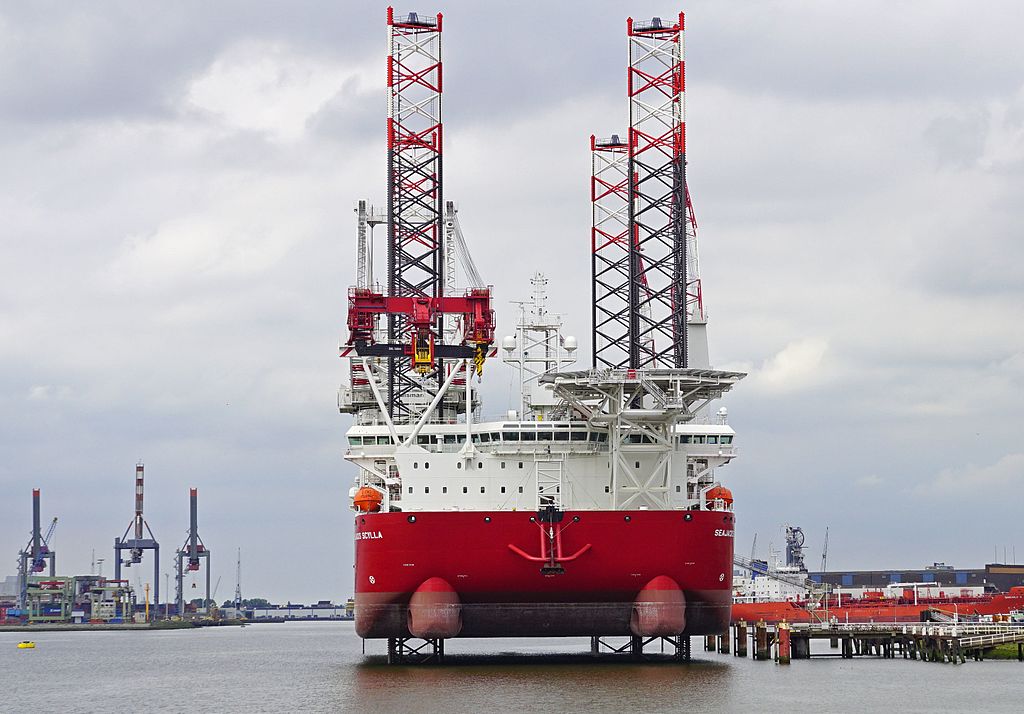The global wind turbine installation fleet will be undersupplied to meet demand after 2025, reports Rystad Energy. This opens up room for more specialised vessel orders and conversions of oil and gas heavy-lift vessels, the analyst firm states.
When translating the volume of offshore wind projects into vessel years for installation scopes, we estimate that the demand for foundation and turbine installations in 2020 is approximately eight and thirteen years respectively. On the supply side of the equation, there are currently 32 active turbine installation vessels and fourteen dedicated foundation installation vessels, with another five on order in both categories.
For the past few years, this has effectively resulted in a relatively oversupplied market, especially in Europe. However, the scale is clearly expected to tip towards an undersupply of installation vessels by the mid-2020s. Rystad Energy expects installation vessel demand will be four to five times higher than today’s figure by 2030.
Especially in the bigger segment, a shortage looms. There are currently only four vessels capable of handling the next generation of turbines such as GE’s Haliade-X 12-MW, which is expected to become commercially available in 2021.
‘We identify the heavy-lift vessel segment as the key bottleneck for offshore wind development from the middle of this decade and the need for next-generation vessels may slow the cost reductions expected in offshore wind,’ says Alexander Fløtre, Rystad Energy’s product manager for offshore wind.
Lacking efficiencies
Rystad also warns that many of the existing vessels may have astonishing lifting capacities – inherited from their original purpose; installing and decommissioning large oil and gas platforms – but are not optimized for wind turbine installation. These large lifting capacities are definitely a key strength to be leveraged but will have little significance if efficiencies, meaning vessel days per installed component, are not able to stay competitive, the analysts say.
‘After turbine and foundation manufacturing, the installation phase is the most capital-intensive development process, consuming about twenty to thirty per cent of total capital expenditures. For a 1-GW project comprised of 100 turbines, this could add up to USD 800 million to USD 1000 million, from which about fifteen to twenty per cent and eight to ten per cent is earmarked for foundation and turbine installation costs, respectively,’ Rystad states.
New players stepping up
There are several companies in the process of gearing up to meet future demand. Cadeler (formerly Swire Blue Ocean) has launched a large scale fleet expansion, ordering a new vessel and upgrading the lift capacities of two of its current vessels to 1600 tonnes. An option for a second newbuild is also included.
Meanwhile, Offshore Heavy Transport is creating a pure-play offshore wind company with two turbine installation vessels and a foundation installation vessels, which are currently under construction. The company’s heavy transport deck carriers will be utilised to transport components.
The biggest thus far has been the decision of dry bulk shipping company Scorpio Bulkers to exit the dry bulk market completely to focus on offshore wind. The company is in the process of selling its bulk carriers to raise funds for four turbine installation vessels.
This article first appeared on Project Cargo Journal, which is another publication of SWZ|Maritime’s publishing partner Promedia.
Picture by Kees Torn, Wikimedia.








